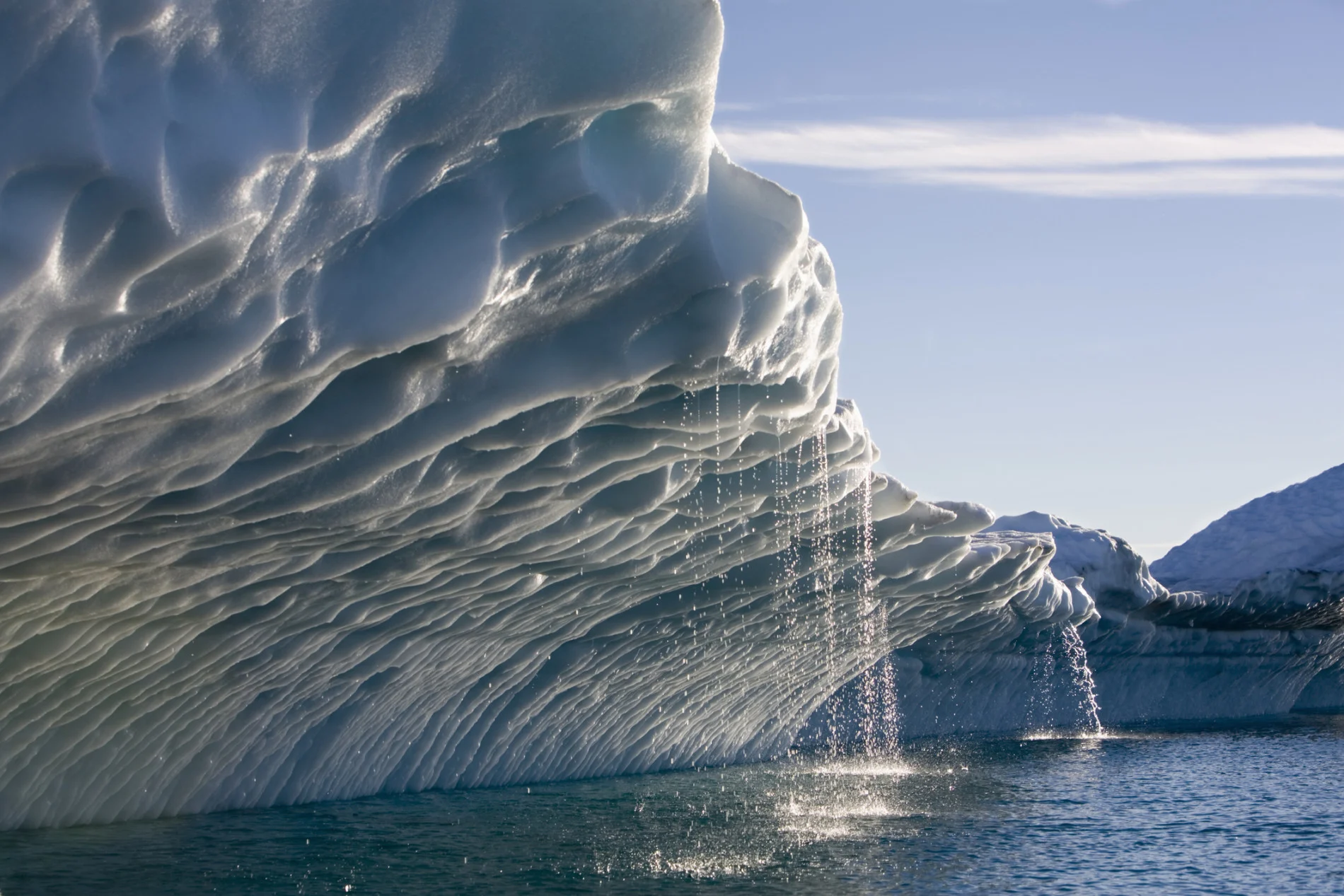
Shocking levels of mercury found leaking from Greenland's ice sheet
The unexpected findings of high mercury levels from melting ice in Greenland raises concerns about the origins of this element.
A study published in Nature Geoscience reports that the Greenland Ice Sheet could be a source of mercury, a powerful neurotoxin that can be deadly to humans.
The discovery of “extremely high mercury yields” add to the increasingly complex reality that Arctic ecosystems are facing: rising sea levels, thawing permafrost, and increasingly rapid rates of warming.
Samples of meltwater collected from the ice sheet in 2012, 2015, and 2018 revealed that high levels of mercury were dissolved in the water. Despite Greenland’s remoteness, the levels of mercury that the researchers recorded are comparable to those found in rivers that are in some of the most populated places on Earth.
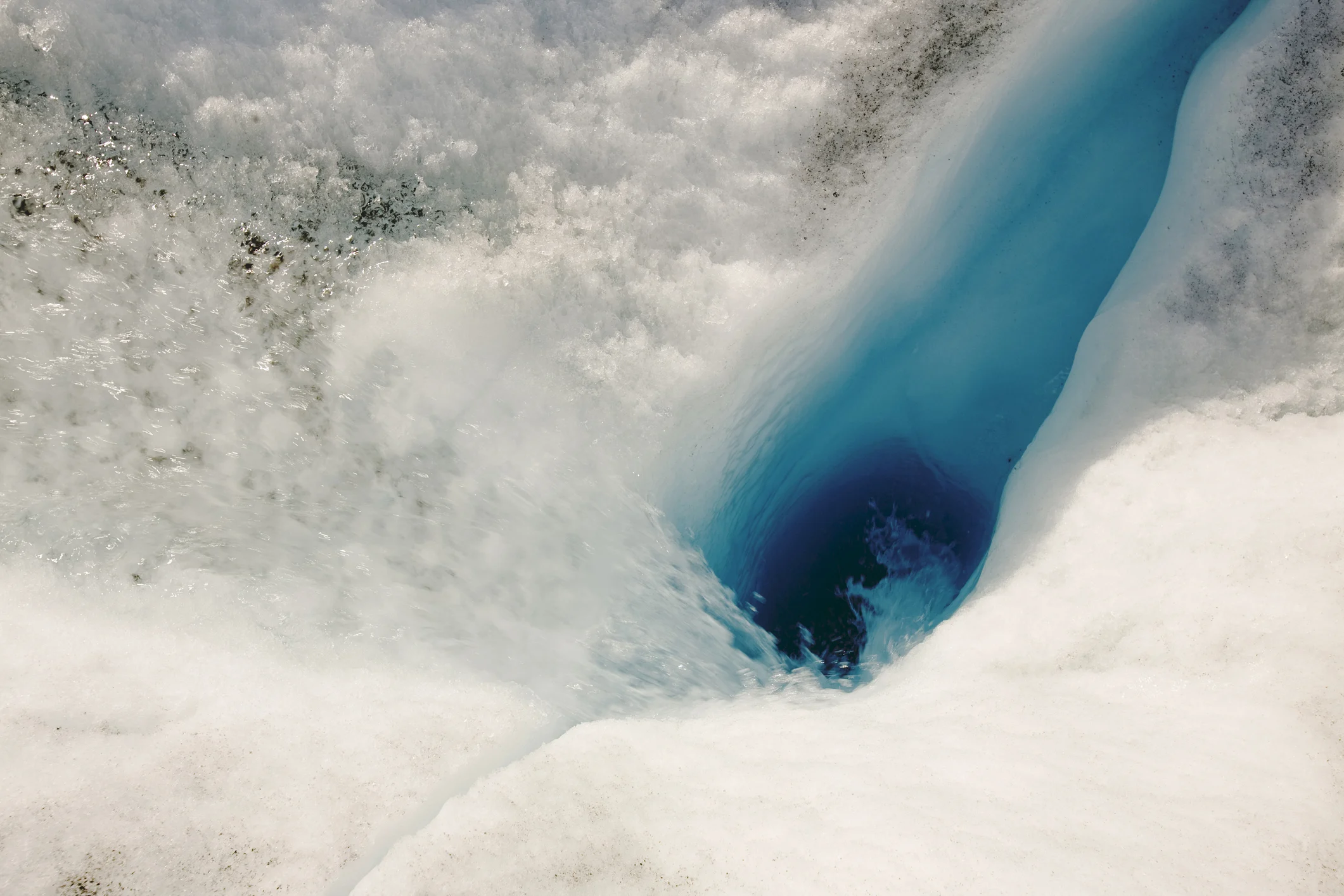
Melt water on the Greenland Ice Sheet near Camp Victor north of Ilulissat. (Ashley Cooper. The Image Bank. Getty Images)
“There [are] definitely higher mercury concentrations in the fjords than we would have expected before we came into this study,” lead author Jon Hawkings, a postdoctoral research fellow at Florida State University, said in an article published by Scientific American.
Mercury persists in the environment and can be converted to a number of different compounds as it cycles between the environment and atmosphere. The researchers say that mercury bioaccumulation is a major concern within ecosystems. This is a process where small organisms, like plankton, unintentionally consume mercury and are then consumed by larger organisms. Ultimately, the final consumer on the food chain ends up ingesting large volumes of the compound and potentially faces serious health complications as a result.
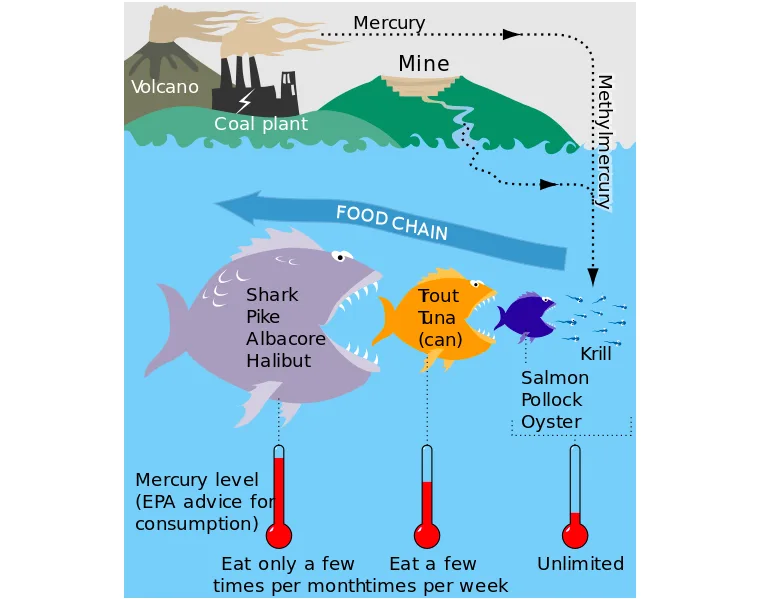
This graphic shows how mercury levels in each successive predatory stage increase. (Bretwood Higman, Ground Truth Trekking/Wikipedia. CC BY 3.0)
Methylmercury is a highly toxic compound and some fish, such as freshwater bass, pike, and swordfish, can bioaccumulate up to one million times greater amounts of the compound than the amount that is found in the surrounding water.
Analysis of the samples collected from the Greenland Ice Sheet revealed that the levels of methylmercury “were concentrations of environmental concern” and exceeded values from most pristine freshwaters, such as the Florida Everglades.
The researchers say that fisheries are a primary food source for Inuit communities in Greenland—the Kalaallit of West Greenland, the Tunumiit of Tunu or East Greenland, and the Inughuit/Avanersuarmiut of the north—which raises concerns about the potential health impacts that could be experienced if the amount of mercury in aquatic species continues to increase.
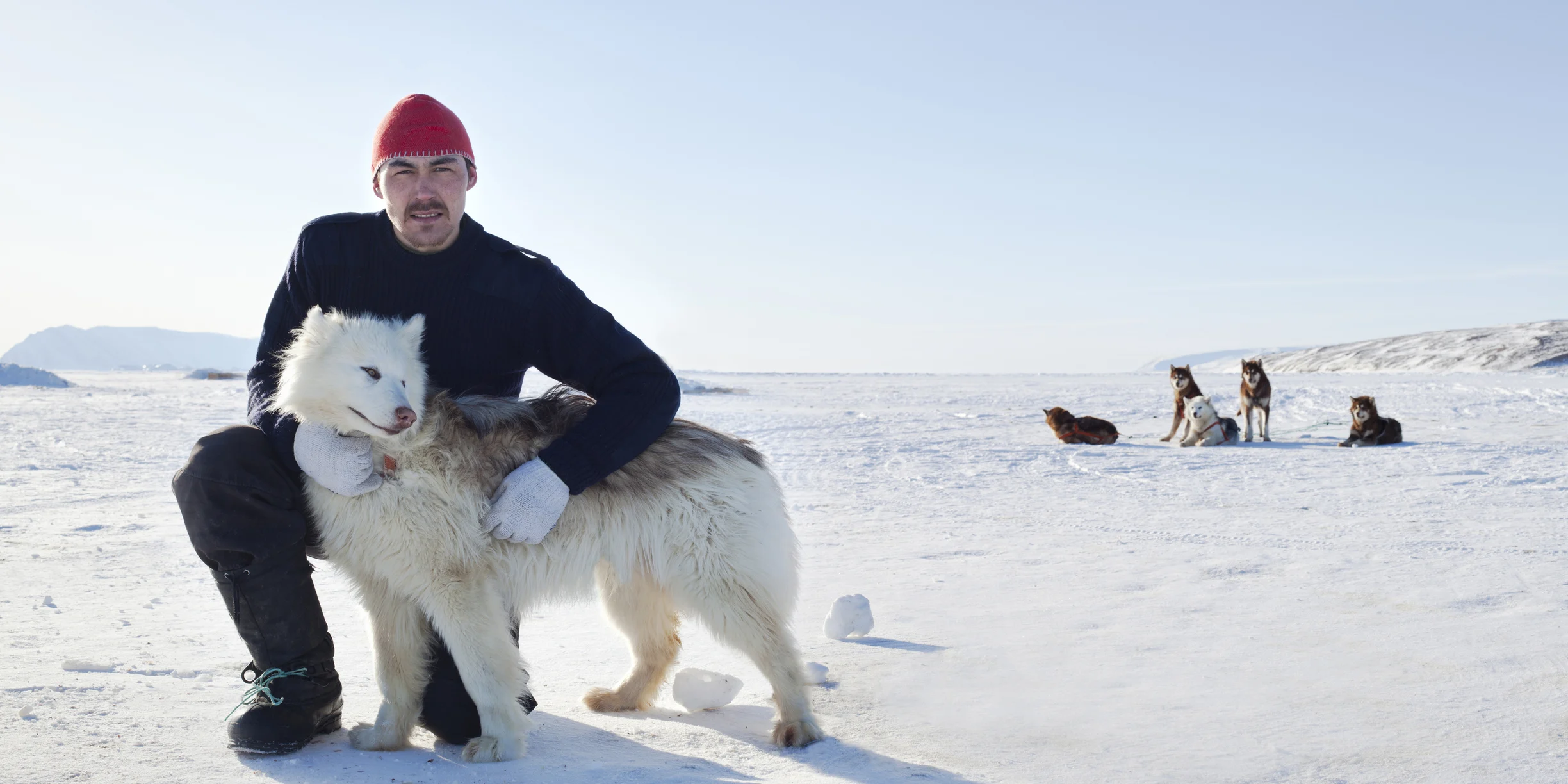
An Inuit fisherman and dog sled driver poses with their sled dog on the frozen sea ice in Qaanaaq, Greenland. (Justin Lewis. Stone. Getty Images)
The study states that “overexposure to mercury, primarily due to consumption of seafood, has major environmental and human health implications with a socio-economic cost estimated to exceed US $5 billion per year” and that “the global mercury problem has worsened significantly due to anthropogenic pollution.”
The researchers say that the Arctic is a global mercury sink due to atmospheric circulation patterns that carry this element northward, which makes this region particularly vulnerable to pollution. However, the study says that it is “unlikely” that the mercury came from human activity because previous studies found that the snow on top of the Greenland Ice Sheet, which is where pollutants first land, is relatively pristine compared to their meltwater samples.
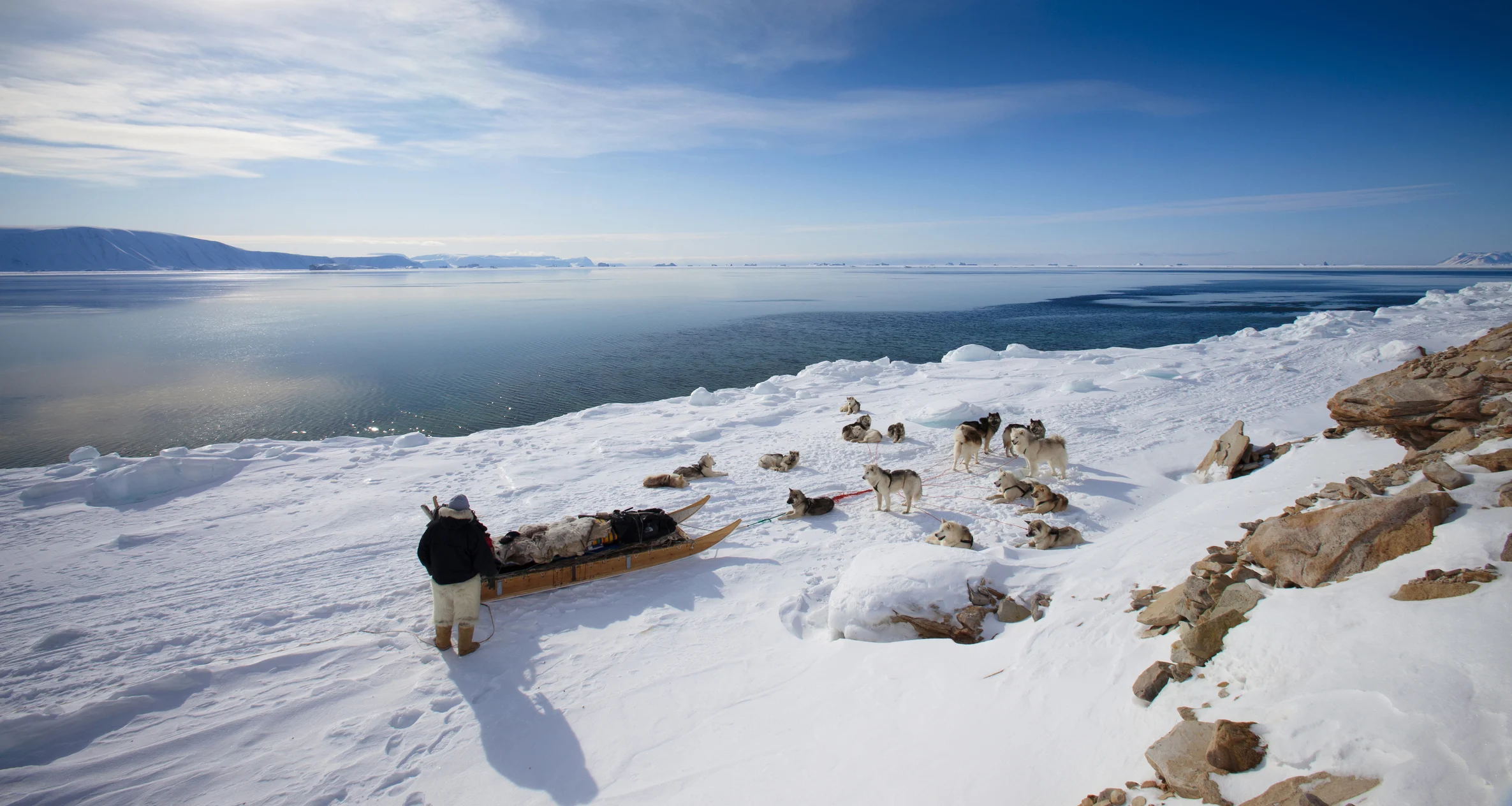
An Inuit man gives his sled dogs a rest while peering out at the newly melted sea ice that exposes the Arctic Ocean. (Justin Lewis. Stone. Getty Images)
While the exact origin of the mercury found in the Greenland Ice Sheet meltwater is unknown, the study says that some of the processes that are affecting Arctic mercury levels include: geothermal activity, bedrock sediments, growing amounts of glacial meltwater in Arctic rivers, intensifying hydrological cycles in both variability and magnitude, melting permafrost, and the disproportionate rate of warming.
The researchers say that there are only a small number of studies that investigate mercury levels in the Arctic and that there is a significant amount of knowledge to be learned from investigating this topic, including in regions such as the Himalayas and Alaska, which could host significant stores of the element.
“It is highly uncertain how projected increases in ice sheet melt rates due to climatic warming in the Arctic will impact mercury export; however, we postulate that rising meltwater runoff will increase mercury yields and therefore downstream flux. This large, unaccounted for and climatically sensitive mercury source has not been considered in current global mercury budgets and mercury management strategies, but it should be assessed urgently given the human and economic implications of elevated mercury exposure,” the study concludes.
Thumbnail credit: Paul Souders. DigitalVision. Getty Images

